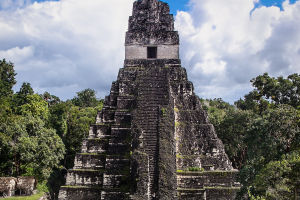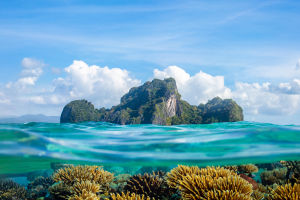Papua is one of Indonesia's most remarkable destinations, tucked away in the eastern part of the archipelago. Lykkers looking for adventure, rich ecosystems, and deep-rooted traditions will find themselves captivated by this lesser-known treasure.
With its wild landscapes, remote islands, and vibrant local life, Papua promises a journey far from the usual paths. Let's discover what makes it so unique, how to get there, and what not to miss.
Where Papua Is Located
Position in the World
Papua occupies the western half of the island of New Guinea, making it part of Oceania even though it belongs to Indonesia. It covers a vast area of approximately 420,000 km² and is home to over four million people.
Administrative Divisions
The region is divided into two provinces: Papua with its capital in Jayapura, and West Papua, whose capital is Manokwari. Despite the great number of local languages spoken—ranging between 200 and 700 dialects—the official language is Indonesian.
How to Get to Papua and Move Around
Reaching Papua by Air
No direct flights connect Papua with European cities. The most efficient route includes a layover in Jakarta followed by a 4–5 hour domestic flight. Two major airports serve the region: Sentani Airport in Jayapura and Dominique Edward Osok Airport in Sorong.
Getting Around
Due to long distances and limited roads, air and boat travel are often the only feasible options. While ferries from other Indonesian islands are available, they require significant travel time and are not recommended for short visits.
Local Transportation
Public transport is minimal. In towns, minibuses and taxis are used, but for most sightseeing, arranging private transport or joining guided tours is the best choice.
When to Visit
Weather Patterns
Papua's climate is tropical and fairly consistent year-round. However, rainfall varies by region:
- Eastern Papua (Jayapura) has more rain between December and March.
- Western areas (Sorong and Raja Ampat) see wetter weather from May to September.
Best Times to Go
For exploring Raja Ampat, visit between October and April. For Jayapura and the eastern areas, the ideal window is May through September.
Top Places to Visit
Jayapura
The capital of Papua offers cultural insights and a relaxing coastal vibe. Visitors can enjoy Base G Beach, a scenic spot perfect for resting and picnicking.
The Loka Budaya Museum displays traditional tools and art from local communities, including unique carved works from the Asmat group.
Baliem Valley
This mountainous valley is ideal for those interested in local life and breathtaking hikes. Surrounded by lush hills and narrow paths, it's best explored with a local guide. Visits here reveal communities living in harmony with ancient customs.
Merauke
The easternmost city in Indonesia, Merauke is known as a stopover for those heading to Wasur National Park. It's a practical base offering accommodations, local markets, and access to nearby nature.
Sorong
Often seen as the gateway to Raja Ampat, Sorong is a port town with fast-developing infrastructure. While not a primary destination in itself, it's a necessary step before embarking to the islands.
Raja Ampat
An archipelago of over 1,500 islands, Raja Ampat is a stunning paradise. With lush greenery and clear waters, it attracts marine life enthusiasts from all over. It hosts around 75% of the world's coral species and over 1,400 types of fish. This makes it one of the most vibrant underwater ecosystems on the planet. Due to its remote location, it has remained largely untouched by mass tourism.
Wasur National Park
Located just 13 km from Merauke, this vast reserve is home to over 350 bird species, including many that are found nowhere else. Between August and November, migratory birds arrive from Australia and New Zealand, turning the park into a bird-watcher's dream.
Costs and Tips
Accommodation
Budget travelers can find simple lodges for around €15–€25 per night. Mid-range hotels in towns like Jayapura and Sorong typically range from €30 to €60 per night. Eco-resorts in Raja Ampat can go higher, starting at €80 and reaching over €200 depending on location and amenities.
Food
Local meals usually cost between €2–€5 at food stalls and small restaurants. In more touristy or remote areas like Raja Ampat, prices can double.
Entry and Tickets
To visit Raja Ampat, travelers must pay a conservation fee, which is approximately €75 and valid for one year. Entrance to Wasur National Park is around €10, and guided tours can be arranged at additional cost.
Tips for Lykkers
Bring cash, especially in rural areas where cards are rarely accepted. Join group tours for better prices and a safer, more informative experience. Respect local customs, especially in tribal regions, and seek permission before taking photographs.
Conclusion
Papua offers an unforgettable mix of raw nature and rich traditions. For Lykkers in search of something rare and genuine, this is the place to go. While the journey may require more planning and investment than other destinations, the rewards—soaring peaks, crystal-clear seas, unique wildlife, and heartfelt encounters—make it all worth it.


